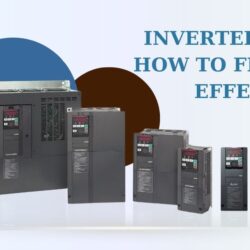Inverters play a crucial role in industrial automation and energy systems, converting DC power into AC for various applications. However, inverter errors can lead to system failures, production downtime, and increased maintenance costs. This article highlights 10 common inverter errors, their causes, and how to troubleshoot them effectively.
Understanding Inverter Errors
Before diving into specific errors, it is essential to understand that inverter errors typically arise due to electrical, mechanical, or programming faults. Regular maintenance and monitoring can help prevent many of these issues.

1. Overcurrent Inverter Error
Causes:
- The motor is stuck, overloaded, or experiencing sudden load changes.
- The cable between the inverter and the motor is too long, causing voltage drops.
- Incorrect parameter settings that do not match the actual load.
Solutions:
- Check and reduce the motor load if necessary.
- Inspect the mechanical system to ensure the motor is not blocked.
- Set an appropriate current limit based on the load.
- If the motor cable is too long, use a harmonic filter or position the inverter closer to the motor.
2. Overvoltage
Causes:
- High or sudden voltage spikes in the power supply.
- Sudden load stoppage causing voltage feedback to the inverter.
- Faulty DC capacitors inside the inverter.
Solutions:
- Check the power supply and use a voltage stabilizer if necessary.
- Configure a proper deceleration setting to prevent sudden stopping.
- Inspect and replace faulty DC capacitors.
3. Troubleshooting Undervoltage
Cause: Insufficient power supply, loose connections, or sudden voltage drops lead to this error.
Solution:
- Check and secure all power connections.
- Monitor the input voltage stability.
- Replace worn-out capacitors if necessary.
4. Preventing Overheating Errors in Inverters
Causes:
- Poor cooling system, faulty cooling fan, or dust accumulation.
- The inverter is placed in a high-temperature environment.
- The motor is running at high power for extended periods.
Solutions:
- Clean the cooling fans and heat dissipation system.
- Ensure the inverter is installed in a ventilated area, away from direct sunlight.
- Reduce motor load or use an inverter with a higher power rating.
5. Ground Fault Inverter Error – Causes and Solutions
Causes:
- One phase of the input power supply is lost or weak.
- One output phase is not supplying enough voltage to the motor.
- Damaged or loose power cables.
Solutions:
- Check and restore the missing input phase.
- Inspect the power cables between the inverter and the motor and tighten connections.
- Verify and adjust phase-loss protection settings if applicable.
6. Communication Failure
Causes:
- The motor operates above its rated power for too long.
- Sudden or excessive load increases.
- Incorrect inverter selection for the motor power.
Solutions:
- Reduce the load or use a motor with an appropriate power rating.
- Inspect the mechanical system for obstructions.
- Adjust overload protection settings in the inverter.
7. Understanding Phase Loss Inverter Error
Causes:
- Electrical leakage from motor cables.
- Poor grounding system.
- Damaged motor insulation.
Solutions:
- Identify and isolate faulty cables, ensuring proper insulation.
- Check and improve the grounding system.
- Replace the motor if insulation is damaged.
8. Motor Stall and Prevention Tips
Causes:
- Faulty connection between the inverter and PLC or control device.
- Damaged or loose communication cables.
- Incorrect communication settings.
Solutions:
- Inspect and reconnect communication cables properly.
- Use shielded cables to minimize electromagnetic interference.
- Verify and configure communication parameters correctly.
9. External Fault
Causes:
- EEPROM failure, preventing parameter storage.
- Configuration errors due to incorrect settings.
- Software issues or internal component failure.
Solutions:
- Restart the inverter and check if the error persists.
- Restore factory settings and reconfigure parameters.
- Update firmware or replace the EEPROM if necessary.
10. EEPROM
Causes:
- Power supply failure or blown fuse.
- Damage due to overload or internal faults.
- Incorrect software settings.
Solutions:
- Check the power supply and replace blown fuses.
- Verify motor load to prevent overload.
- Update firmware or reset the inverter if necessary.
Conclusion
Understanding these common inverter errors and their solutions helps minimize downtime and maintain smooth operations. Regular maintenance, proper installation, and correct parameter settings are key to preventing inverter issues. If problems persist, consulting a professional technician is recommended to ensure long-term reliability.
We hope this guide helps you recognize and resolve common inverter errors effectively!



